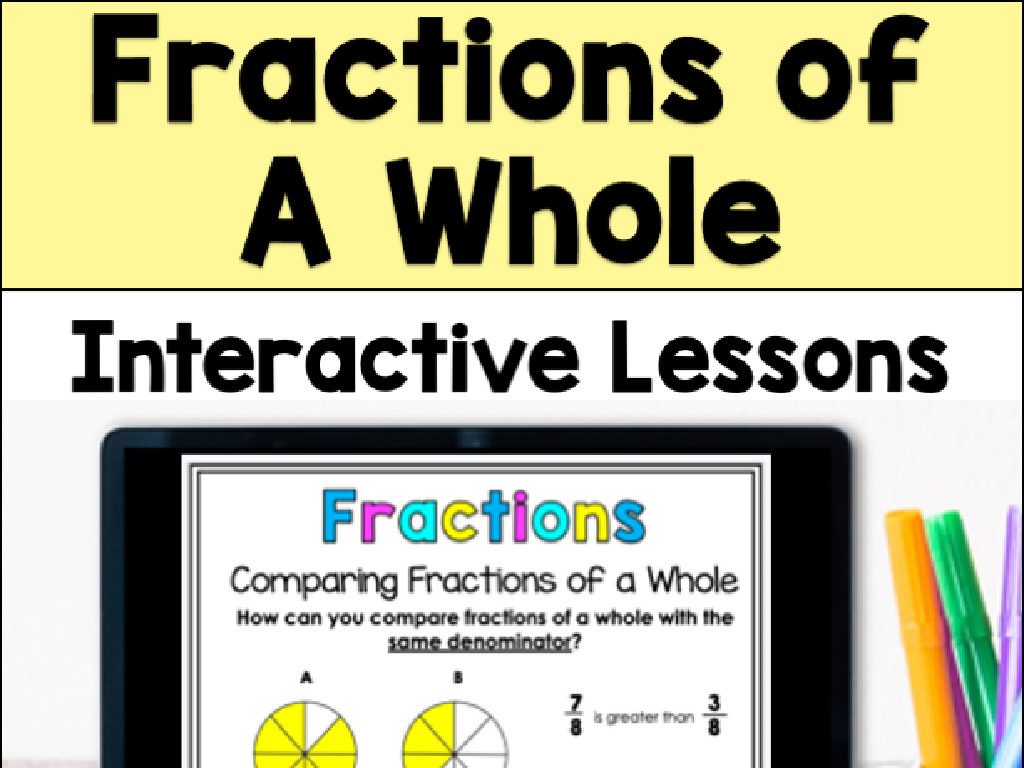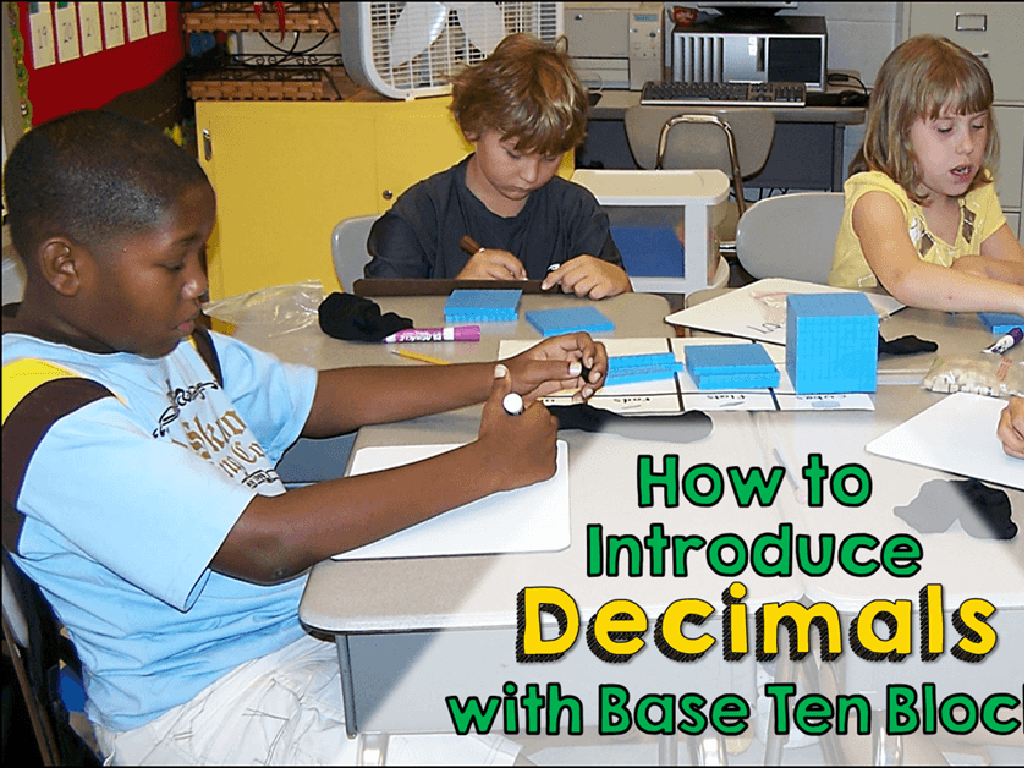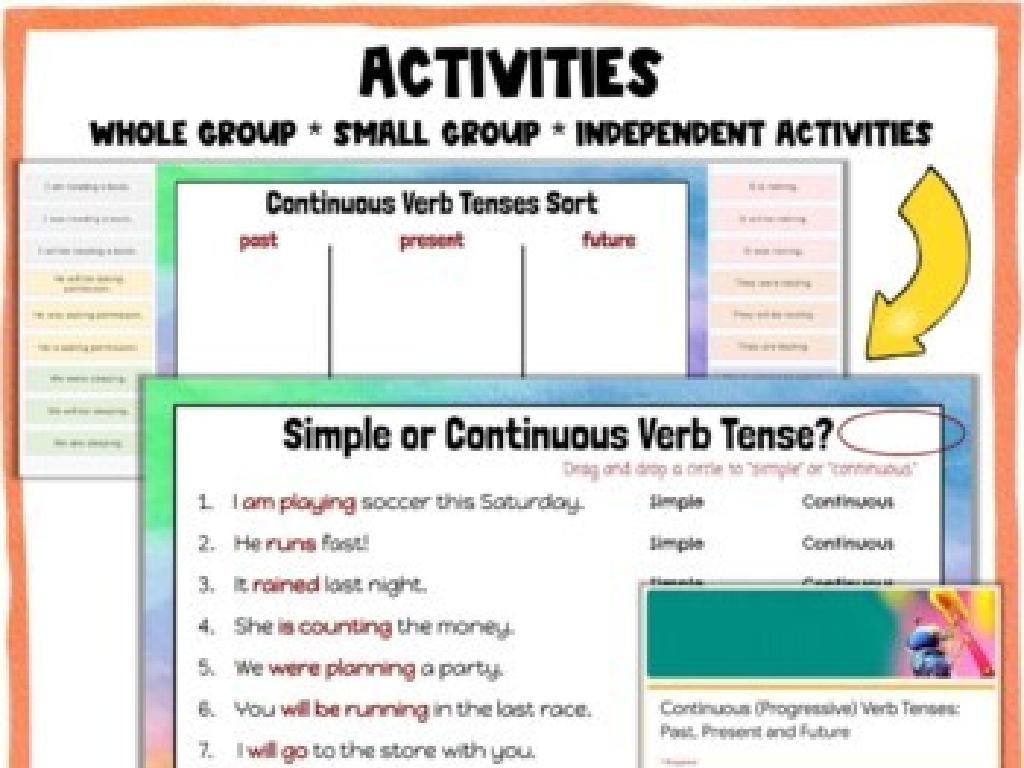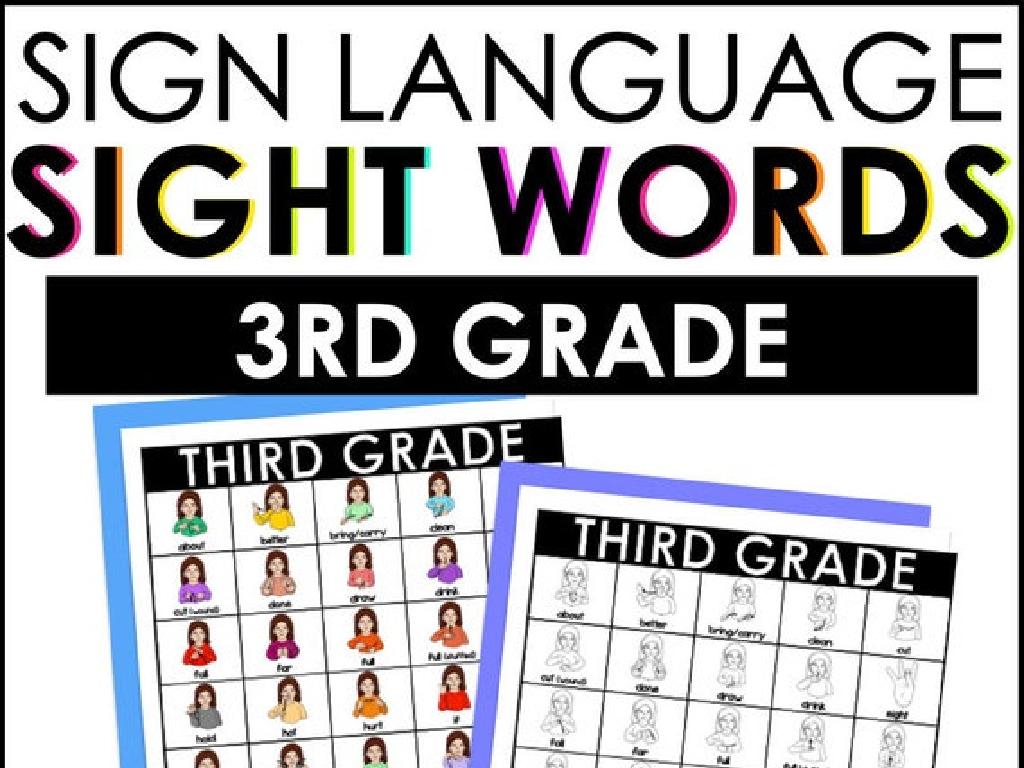Make Predictions
Subject: Math
Grade: Eighth grade
Topic: Probability
Please LOG IN to download the presentation. Access is available to registered users only.
View More Content
Introduction to Probability
– Understanding Probability
– Probability measures the likelihood of an event occurring.
– Probability in Real Life
– Weather forecasts, game outcomes, and risk assessments.
– Making Predictions with Probability
– Use probability to anticipate future events based on possible outcomes.
– The Role of Probability in Decision-Making
– Informed decisions in uncertain situations rely on understanding probability.
|
This slide introduces the concept of probability, which is a fundamental part of mathematics that deals with calculating the likelihood of various events. It’s important for students to grasp that probability is not just theoretical but is applied in many aspects of daily life, such as predicting weather or assessing risks. By understanding probability, we can make informed predictions about future events, which is a valuable skill in both academic and real-world scenarios. Encourage students to think of situations where they already use probability without realizing it, and discuss how it can be a tool for making better decisions under uncertainty.
Understanding Probability
– Define Probability
– Probability measures the likelihood of an event to occur.
– Explore the Probability Scale
– Scale ranges from impossible (0) to certain (1).
– Learn Basic Probability Terms
– Outcome: a possible result; Event: a set of outcomes; Sample Space: all possible outcomes.
– Apply terms in predictions
|
This slide introduces the fundamental concept of probability, which is a measure of how likely an event is to occur. The probability scale is a visual representation to help students understand the range of possibilities from something that cannot happen to something that is sure to happen. Key terms such as ‘outcome,’ ‘event,’ and ‘sample space’ are crucial for students to grasp as they form the basis of understanding probability. Students should be encouraged to apply these terms to make predictions about various events, enhancing their comprehension through practical examples. Activities could include predicting the outcome of a dice roll or the likelihood of pulling a certain colored marble from a bag.
Calculating Simple Probability
– Understand probability formula
– Probability = Favorable Outcomes / Total Outcomes
– Coin toss probability example
– 1 favorable (head) out of 2 possible outcomes (head or tail)
– Dice roll probability example
– 1 favorable (four) out of 6 possible outcomes (1-6 on die)
– Practice with different scenarios
|
This slide introduces the basic concept of probability, which is a measure of how likely an event is to occur. The formula for calculating simple probability is the ratio of the number of favorable outcomes to the total number of possible outcomes. Use a coin toss as an example to illustrate a 50% chance event, where getting a head has 1 favorable outcome out of 2 possible outcomes. Similarly, use the example of rolling a four on a six-sided die to show a 1 in 6 chance, or approximately 16.67%. Encourage students to think of other simple events and practice calculating their probabilities to reinforce the concept.
Making Predictions with Probability
– Understanding probability’s role
– Probability assesses the likelihood of future events based on outcomes.
– Theoretical vs. Experimental Probability
– Theoretical: based on reasoning; Experimental: based on actual trials.
– Making decisions using probability
– Use probability to evaluate risks and benefits before deciding.
– Probability in everyday choices
|
This slide introduces students to the concept of probability as a tool for making predictions about future events. It distinguishes between theoretical probability, which is derived from known information or reasoning, and experimental probability, which is based on the results of actual experiments or trials. Emphasize the practical applications of probability in everyday life, such as predicting weather or assessing risks. Encourage students to think critically about how probability can inform their decisions, and provide examples to illustrate these concepts. The goal is to help students understand that probability is not just a theoretical concept but a practical tool that can guide their choices.
Complex Probability: Compound Events
– Understanding compound events
– A compound event combines two or more separate events.
– Calculating compound probabilities
– Use the multiplication rule P(A and B) = P(A) * P(B) if events are independent.
– Real-world complex probability
– Scenarios like weather forecasts or game outcomes.
– Practice with examples
– Example: Probability of rolling a 4 then a 6 with dice.
|
This slide introduces students to the concept of complex probability through the study of compound events. Begin by explaining that a compound event is the combination of two or more separate events, and the probability of compound events occurring together can be calculated. For independent events, where one event does not affect the outcome of another, the multiplication rule is applied. Provide real-world scenarios such as predicting weather patterns or the likelihood of certain outcomes in sporting events to illustrate complex probability. Encourage students to practice with examples, such as calculating the probability of rolling a specific sequence of numbers on dice, to solidify their understanding.
Probability in Action: Dice Predictions
– Roll dice to predict outcomes
– Calculate outcome probabilities
– Use the formula P(Event) = Number of favorable outcomes / Total possible outcomes
– Record and compare results
– Tally the roll outcomes in a table
– Discuss predictions vs. actuals
– Reflect on why predictions may differ from the actual outcomes
|
This class activity is designed to give students hands-on experience with probability. Provide each group with a pair of dice and instruct them to predict the outcomes of rolling the dice, such as getting a sum of 7. They should then roll the dice a set number of times, recording the outcomes each time to calculate the experimental probability. Afterward, facilitate a group discussion to compare their predicted probabilities with the actual results from the experiment. Encourage students to consider the law of large numbers and how more trials could bring the experimental probability closer to the theoretical probability. Possible variations of the activity could include predicting outcomes for rolling a single die, rolling two dice of different colors, or predicting the outcomes of dice with more than six sides.
Wrapping Up: Probability & Predictions
– Recap: Probability & Predictions
– Daily Benefits of Understanding Probability
– Helps in informed decision-making, risk assessment, etc.
– Q&A Session
– Clarify doubts, solidify understanding
– Reflect on Today’s Learning
|
As we conclude today’s lesson, we’ll revisit the key concepts of probability and how it enables us to make predictions. Emphasize the practical applications of probability in everyday life, such as in weather forecasts, sports, and even simple decision-making. Encourage students to think about how a better understanding of probability can lead to better choices. The Q&A session is crucial for addressing any lingering questions and ensuring that students are confident in the material covered. Finally, ask students to reflect on what they’ve learned and how they can apply this knowledge outside of the classroom. This reflection can be done through a quick write-up or a group discussion.






